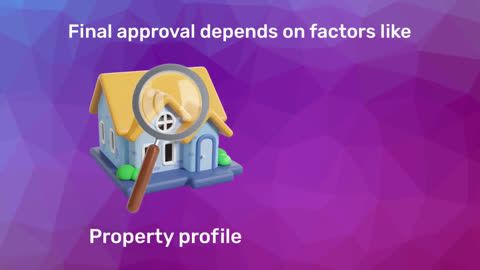What does Section 3 of the RERA Act cover?
Section 3 of the RERA Act mandates that no real estate project can be advertised, sold, or booked without prior registration with the respective state’s RERA authority. This applies to residential, commercial, and mixed-use developments.Here is what Section 3 includes:
- Mandatory registration: Developers must register any project exceeding 500 square metres of area or with more than eight apartments.
- Public disclosure: Registered projects must provide transparent details, such as timelines, funding sources, and approvals.
- Penalties for non-compliance: Violating this section attracts hefty penalties and, in extreme cases, imprisonment for developers.
Key features of Section 3
1. Applicability: Section 3 applies to both ongoing and new projects. Ongoing projects that were incomplete at the time RERA came into effect also require registration.2. Exemptions: Certain projects are exempt from Section 3 requirements, including:
- Developments covering less than 500 square metres.
- Projects with less than eight apartments.
- Renovation or repair projects without marketing new sales.
To comply with Section 3, developers must submit detailed information about the project, such as:
- Project plans and timelines.
- Financial disclosures, including escrow account details.
- Ownership documents and statutory approvals.
Why is Section 3 important?
Section 3 of the RERA Act aims to address key challenges in the real estate sector:1. Transparency: By requiring project registration, buyers gain access to accurate and verified information. This reduces misinformation and builds trust.
2. Buyer protection: It ensures that buyers invest only in legally approved and compliant projects. Registered projects are less likely to face legal or financial roadblocks.
3. Regulated market: With strict penalties for non-compliance, Section 3 discourages unethical practices and promotes accountability among developers.
4. Encourages fair practices: The mandatory registration process encourages developers to adhere to high standards, improving the overall credibility of the real estate market.
How does Section 3 impact developers?
For developers, Section 3 introduces new responsibilities:1. Increased compliance: Developers must ensure that all necessary approvals, plans, and disclosures are in place before registering a project.
2. Escrow accounts: Funds collected from buyers must be deposited in a RERA escrow account. This ensures money is used only for the intended project.
3. Penalties for violations: Non-compliance with Section 3 can result in:
- A fine of up to 10% of the project cost.
- Further fines or imprisonment for repeated violations.
How does Section 3 protect homebuyers?
1. Assured legitimacy: Projects registered under Section 3 must comply with all legal and regulatory requirements. This ensures buyers invest in legitimate ventures.2. Transparency in transactions: Buyers can access detailed project information through the RERA portal, enabling informed decision-making.
3. Timely completion: With funds managed through escrow accounts and strict timelines, projects are more likely to be delivered on schedule.
4. Grievance redressal: In case of disputes, buyers can approach the RERA authority for resolution, thanks to the structured framework introduced by Section 3.
How to check if a project is registered under Section 3?
To verify a project’s registration:1. Go to the RERA website for the state where the project is located. For example, if the project is in Maharashtra, go to the Maharashtra RERA website.
2. Navigate to the "Registered Projects" section.
3. Enter the project details in the search box. You can search by project name, developer name, project type, RERA registration number, or location.
4. Click the "Search" button.
5. A list of projects matching the search criteria will appear.
6. Select the project you want to view.
7. The project details will appear, including the project status, registration status, completion date, and more.
Compliance tips for developers
For developers, staying compliant with Section 3 is non-negotiable. Here are some best practices:- Plan ahead: Obtain all necessary approvals and documents before applying for registration.
- Maintain accurate records: Ensure that all submitted details, such as project costs and timelines, are accurate and up-to-date.
- Follow milestones: Withdraw funds from escrow accounts only after completing certified milestones.
- Regular audits: Keep financial and project records audit-ready to avoid penalties.
RERA and home loans
For buyers, Section 3 compliance makes it safer to invest in real estate. But what if you need financial support to buy your dream home?Home loans are a reliable way to bridge the gap. Leading financial institutions provide competitive interest rates and tailored plans for RERA-compliant properties. Opting for a home loan ensures you invest in trustworthy projects without compromising your budget.
How Bajaj Housing Finance simplifies home buying
Bajaj Housing Finance offers home loans specifically designed for buyers looking to invest in residential properties. With attractive interest rates, quick approvals, and easy documentation, Bajaj Housing Finance helps you step into your dream home with confidence.With Bajaj Housing Finance, you can enjoy:
1. High loan amount: Secure a home loan of up to Rs. 15 crore* to bring your dream home to life.
2. Low interest rates: Enjoy interest rates starting 8.25%* p.a, and EMIs as low as Rs. 741/lakh*.
3. Quick approval: Get approved within 48 Hours* of applying – sometimes even sooner.
4. Flexible repayment tenure: Choose a repayment term of up to 32 years for comfortable EMIs.
5. Simple application: Take advantage of doorstep document collection for a smooth process.
6. Balance transfer facility: Move your existing home loan and get a top-up loan with better terms.
If you are ready to invest in a residential property, consider a home loan from Bajaj Housing Finance.




